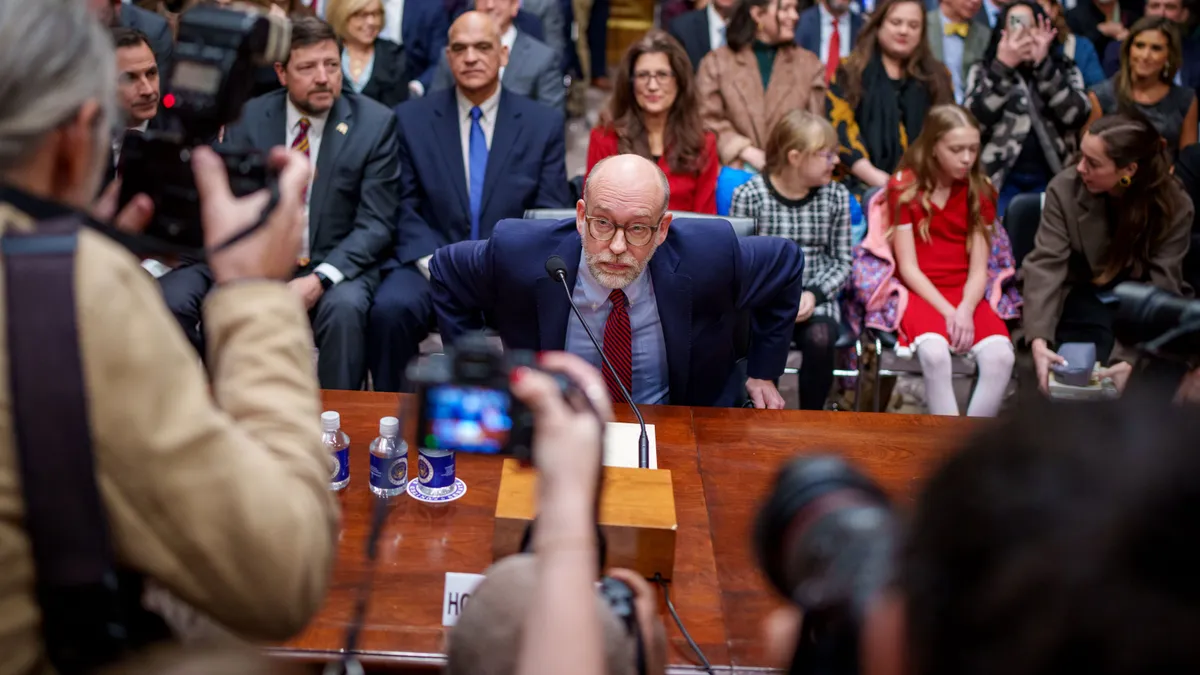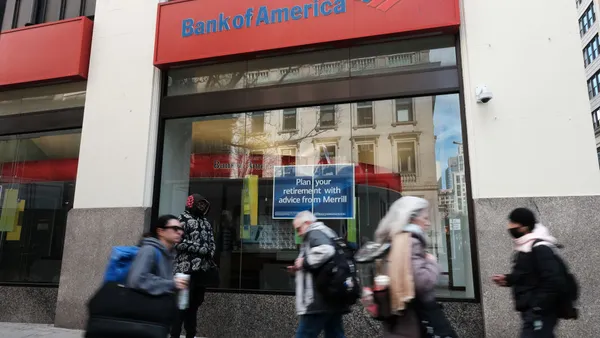Dive Brief:
- The government relief payments issued in response to the COVID-19 pandemic contributed to a drop in the number of unbanked households in the U.S. in 2021, the Federal Deposit Insurance Corp. (FDIC) said Tuesday.
- An estimated 4.5% of Americans, representing 5.9 million households, lacked a bank or credit union account in 2021. That represents the lowest national unbanked rate since the regulator began tracking the data in 2009, the FDIC said in its 2021 National Survey of Unbanked and Underbanked Households.
- Roughly 1.2 million more households are banked, compared with 2019 figures, the FDIC found. Nearly half of newly banked households that received pandemic relief payments said the payments contributed to their decision to open a bank account, the FDIC said.
Dive Insight:
With the release of the last biennial survey in 2020, the FDIC’s then-chair, Jelena McWilliams, posited the pandemic had the potential to increase the percentage of unbanked Americans. As it stands, the opposite happened.
During the pandemic, the government distributed nearly $2 trillion in unemployment benefits and stimulus checks, aimed at providing financial relief to households affected by COVID-19-related lockdowns.
Almost half (45%), or 1.9 million, of recently banked households that received a government benefit during the pandemic said the payment contributed to their opening a bank account, the FDIC survey found.
“During the pandemic, consumers opened bank accounts to access relief funds and other benefits quickly and securely,” FDIC Acting Chairman Martin Gruenberg said in a statement. “Safe and affordable bank accounts provide a way to bring more Americans into the banking system and will continue to play an important role in advancing economic inclusion for all Americans.”
The FDIC report highlights the importance of “bankable moments,” such as receiving benefits or starting a new job, Gruenberg said.
About one-third of recently banked households said starting a new job contributed to a decision to open a bank account, the FDIC found.
However, a higher proportion of nonwhite Americans remains unbanked, according to the regulator.
In 2021, 2.1% of White households were unbanked, compared with 11.3% of Black households and 9.3% of Hispanic households, the agency said.
“While this gap is sizable, it is notably smaller than just two years prior, when the unbanked rate in 2019 among White households was 2.5 percent compared to 13.8 percent and 12.2 percent among Black and Hispanic households, respectively,” the FDIC said.
About 21.7% of unbanked households said not having enough money to meet minimum balance requirements was the main reason they did not have a bank account, the FDIC said. A lack of trust in banks was the second-most cited reason, the regulator found.
The FDIC found about 14% of households, or 18.7 million, were underbanked in 2021. That means they have a bank but used key nonbank financial products and services during the year. The percentage represents a drop of about one-third since 2017, the FDIC said.
“Banked households appear to be using nonbank online payment services in conjunction with banking products by linking them to credit cards or bank accounts, while unbanked households are frequently using these services in place of a bank account,” Gruenberg said. “The FDIC will continue its educational and outreach efforts to help consumers understand the benefits of a bank account, the consumer protections they afford, and the applicability of deposit insurance.”
Nearly half of all households (46.4%) used a nonbank online payment platform, such as PayPal, Venmo and Cash App in 2021, including two-thirds of households younger than 35, the FDIC said.
The agency found 9.3% of White households were underbanked in 2021, compared with 24.7% of Black households and 24.1% of Hispanic households.














